You are here
The catacombs of Rome: thousands of victims of an epidemic ?
The catacomb of saints Marcellinus and Peter in Rome has been undergoing systematic excavation since 2005. The research involves the Pontifical Commission of Sacred Archaeology (Holy See), the CNRS, the Ecole française of Rome, the French National Institute for Preventive Archaeological Research and the Maison des Sciences de l'Homme of Aquitaine (MSHA), who are all collaborating on this project.
The catacomb of Peter and Marcellinus is situated on the ancient Via Labicana, south-east of Rome, 3 kilometres from the walls of the ancient town. The network of subterranean galleries, 4.5 kms. long, covers an area of three hectares on three levels. Between 20,000 and 25,000 deceased are buried there. This complex catacomb, in which the saints Peter and Marcellinus are interred, is only one of the 60 Christian cemeteries in Rome but contains almost a third of the known paintings in the catacombs.
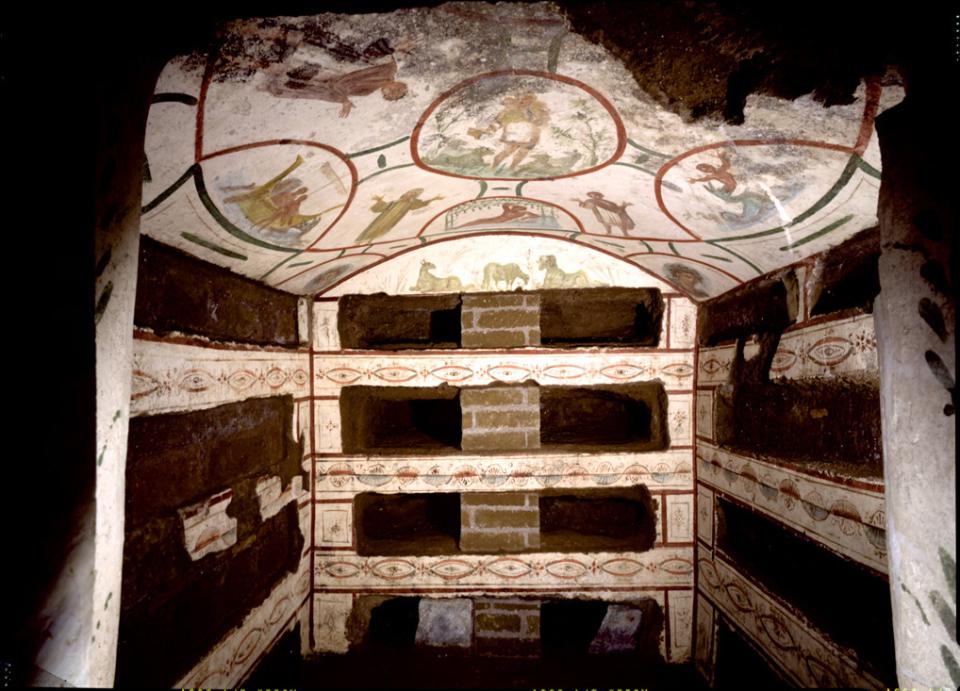
New rooms inside the catacomb of saints Peter and Marcellinus
A few remains of wall paintings, dating stylistically from the 6th and 7th centuries AD, could indicate a cult of relics which, according to written sources of the Early Middle Ages, could be that of a group of Martyrs. In fact, the presence of numerous figures in the details of one painting might indicate the cults of the "Thirty Roman Martyrs" or, more probably, of the "Forty martyred soldiers of Sebaste", now Sivas (Turkey).
The archaeo-anthropological study, carried out in a series of rooms adjoining the gallery, where acts of worship were practised, has revealed a quite unusual organisation of space, containing rooms of different sizes and shapes at very different levels. This layout is in no way similar to the traditional arrangement of the catacomb, which consists of galleries bordered with loculi (niches to place the bodies), of arcosolia (elaborate niches crowned with an arch) or of cubicula (rooms grouping individual tombs for families or corporations).
Ossuary or burial place in a period of crisis?
When these heaps of bones were discovered, Raffaella Giuliani, questioned their nature. Was it an ossuary resulting from the cleaning of the catacomb at a particular moment of its functioning, or could one envisage a specific place which was used to receive thousands of bodies? The excavation of one of these groups of skeletons in 2004 by two anthropologists from the University of Pisa identified more than 50 individuals placed there simultaneously or over a very short period of time.
On the strength of these results, the Pontifical Commission requested the collaboration of Dominique Castex (CNRS), because of her research into multiple mortality crises in the past. She associated Philippe Blanchard, Inrap archaeologist and specialist of burials in periods of crisis, with whom she had worked in 2002 on the multiple burials at Issoudun following an epidemic.
The aim of the mission was to study closely the organisation and functioning of these ensembles to confirm the simultaneous nature of the placing of bodies in each room and to try and identify the cause of deaths. It was also important to date these ensembles and to try and identify the population buried there.
Between 3000 and 4000 individuals
In spite of their very poor state of conservation, the biological study carried out on those excavated nevertheless showed the predominance of young adults (often women) and the small number of children. There is no damage to the bones which would clearly indicate that they were Christian martyrs.
Original funerary practices
A Carbon 14 date from one individual has given a result between 28 and 132 AD, thus suggesting the very early character of these ensembles which predate the use of the catacomb for Christian mortuary rites.
Plague, typhus, smallpox ?
The early date obtained in this sector should be confirmed to determine if it could not be at the origin of the Christian funerary network developed from the end of the 3rd century AD.
In addition, the identification of the cause of death is essential so as to improve the understanding the phenomena of crises of mortality due to epidemics (appearance of illnesses, diffusion, etc.). The plague as well as typhus and smallpox are under consideration at the moment.
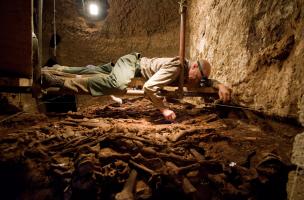


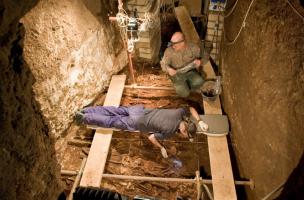
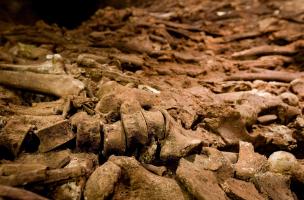
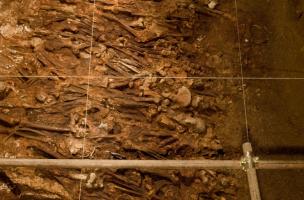
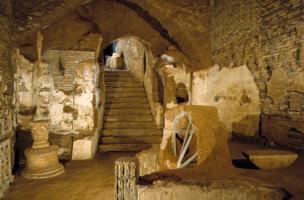
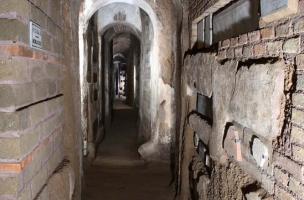

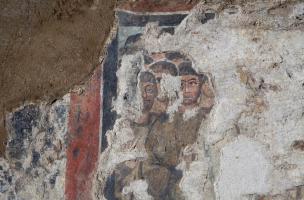
Inrap : Philippe Blanchard, archéologue
Vincent Charpentier
Chef de Pôle
Inrap, pôle partenariats et relations avec les médias
01 40 08 80 16
vincent.charpentier [at] inrap.fr
Mahaut Tyrrell
Media communication
Inrap, media partnerships and relations department
+33 (0)1 40 08 80 24
mahaut.tyrrell [at] inrap.fr

